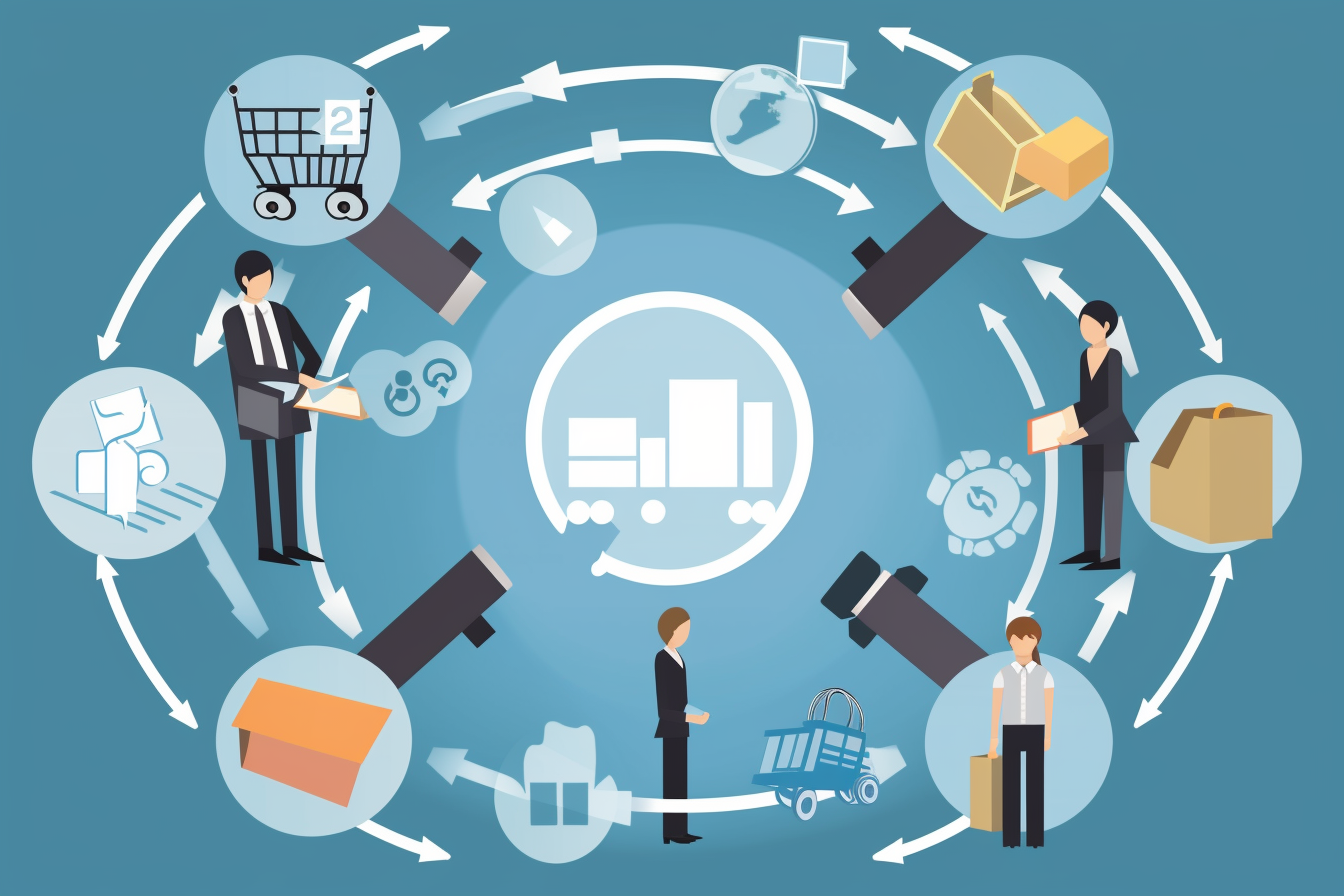In recent years, there has been a surge in online shopping due to the convenience it provides. With the growth of e-commerce, a new business model has emerged: re-commerce. Re-commerce refers to the practice of buying and selling used products online. This business model has gained popularity due to the benefits it offers. In this article, we will explore the differences between re-commerce and e-commerce, and the benefits of the re-commerce business model with examples.
What is E-commerce?
E-commerce, or electronic commerce, is the buying and selling of goods or services through the internet. The growth of e-commerce has revolutionized the way businesses operate and how consumers purchase products. E-commerce has made it possible for businesses to reach a global audience, increase sales, and reduce overhead costs. Consumers can shop from the comfort of their homes and have products delivered to their doorstep.
What is Re-commerce?
Re-commerce, also known as reverse commerce or recommerce, is the buying and selling of used products online. Re-commerce allows consumers to sell their used products to other consumers who are looking for a more affordable option. The re-commerce business model focuses on extending the life cycle of products and reducing waste.
Differences between Re-commerce and E-commerce
Nature of Products
The main difference between re-commerce and e-commerce is the nature of the products being sold. E-commerce typically sells new products, whereas re-commerce sells used products.
Business Model
Another difference between re-commerce and e-commerce is the business model. E-commerce businesses typically purchase products from manufacturers or wholesalers and sell them directly to consumers. Re-commerce businesses, on the other hand, purchase used products from consumers and sell them to other consumers.
Sustainability
Re-commerce businesses focus on sustainability and reducing waste by extending the life cycle of products. E-commerce businesses, however, may contribute to waste by selling new products that may not be used to their full potential.
Benefits of Re-commerce Business Model
Lower Cost
One of the main benefits of the re-commerce business model is that it provides consumers with a more affordable option. By purchasing used products, consumers can save money compared to buying new products.
Environmental Sustainability
Re-commerce businesses contribute to environmental sustainability by reducing waste and extending the life cycle of products. By buying and selling used products, re-commerce businesses reduce the need for new products to be produced, which reduces the demand for natural resources.
Increased Accessibility
Re-commerce businesses provide consumers with increased accessibility to products that may have been out of their price range if they were sold new. This allows consumers to access products they may not have been able to afford otherwise.
Circular Economy
Re-commerce businesses contribute to the circular economy by keeping products in use for longer. The circular economy is an economic system that aims to eliminate waste and create a closed-loop system where products are reused, repaired, or recycled.
Revenue Generation
Re-commerce businesses can generate revenue by buying used products at a lower cost and selling them at a higher price. This allows re-commerce businesses to make a profit while providing consumers with a more affordable option.
Examples of Successful Re-commerce Businesses
- ThredUp – ThredUp is a re-commerce platform that specializes in secondhand clothing. They have a wide selection of clothing and accessories for women and children, and their business model focuses on sustainability and reducing waste.
- Poshmark – Poshmark is a re-commerce platform that allows users to buy and sell used clothing, accessories, and home goods. They have a large community of users, and their platform is user-friendly and easy to navigate.
- Gazelle – Gazelle is a re-commerce platform that specializes in used electronics. They purchase used electronics from consumers and refurbish them before selling them on their website.
- The RealReal – The RealReal is a luxury re-commerce platform that specializes in high-end fashion and accessories. They authenticate all products before selling them and provide consumers with a more affordable option for luxury goods.
Potential Challenges of Re-commerce Business Model
While the re-commerce business model has many benefits, there are also potential challenges that businesses may face. One challenge is the need for a steady supply of used products to sell. Re-commerce businesses rely on consumers to sell their used products, and if there is a shortage of supply, it can be difficult to maintain inventory.
Another challenge is the need for quality control. Re-commerce businesses need to ensure that the used products they are selling are in good condition and meet certain standards. This can be difficult to control since products are being sold by individual consumers.
Conclusion
Re-commerce is a business model that has gained popularity due to its benefits for consumers and the environment. The re-commerce business model focuses on extending the life cycle of products and reducing waste, while also providing consumers with a more affordable option. The success of re-commerce businesses such as ThredUp and Poshmark is a testament to the viability of this business model. However, there are also potential challenges that businesses may face, such as maintaining a steady supply of used products and ensuring quality control.
FAQs
- Is re-commerce a sustainable business model?
- Yes, re-commerce is a sustainable business model that contributes to environmental sustainability by reducing waste and extending the life cycle of products.
- What types of products can be sold through re-commerce?
- Re-commerce can involve the buying and selling of a wide range of products, including clothing, electronics, furniture, and more.
- Can re-commerce businesses make a profit?
- Yes, re-commerce businesses can make a profit by buying used products at a lower cost and selling them at a higher price.
- Are there any potential challenges associated with the re-commerce business model?
- Yes, potential challenges include maintaining a steady supply of used products and ensuring quality control.
- What are some examples of successful re-commerce businesses?
- Examples include ThredUp, Poshmark, Gazelle, and The RealReal.
